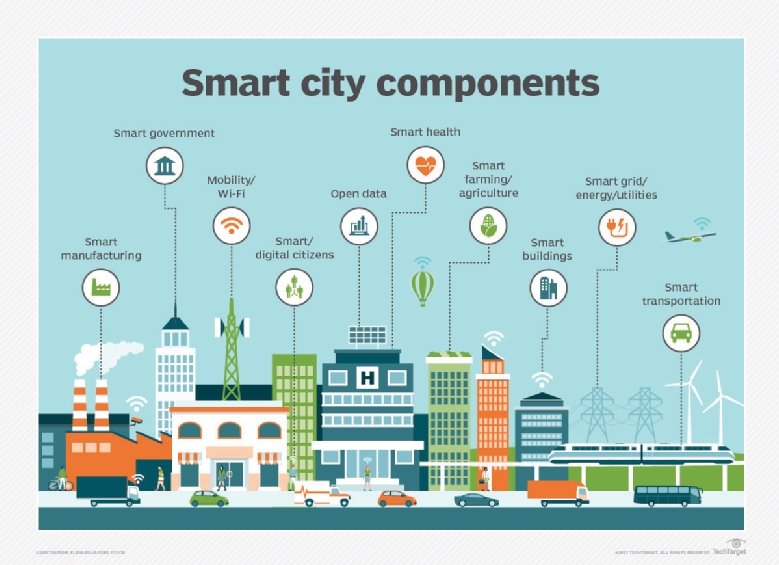Smart Cities are urban areas using information management technologies (like Big Data) and electronic gadgets (like sensors) together with the Internet of Things (IoT) to collect and supply data from city infrastructure. This raw data is aggregate it, normalized it, analyzed it, and interpreted it in real time to efficiently optimize the available resources, and effectively manage all city operations and services to drive economic growth. Smart Cities aims to make metropolitan environments more accessible (like implementing new transit concepts), safer (by minimizing hazards and fast-responding to emergencies), healthier (like increasing the public well-being), cleaner (by reducing pollution and smog), and enjoyable for its residents.
Smart City integrates robust connectivity and automation with IoT and Artificial Intelligence (AI), distributed computing and other technologies by capitalizing the short- and long-term city pain points, managing funding and budget procurement, and furthermore, the legislative processes across all-level government departments. Smart Cities of tomorrow are relying on technical innovations today, like robust Vehicle-to-Vehicle (V2V) and Vehicle-to-Infrastructure (V2X) connectivity —for transportation-based tech enablement; long-range RFID tagging —for automatic vehicle identification and road safety systems; or smart card ICs —for retail, admission and access control.
A city is not smart due it has the technology but because it uses in ways that improve all Smart City components: home, transportation & mobility, buildings, life & health, energy & grid, governance, manufacturing & farming, and even mobile payments and digital citizenship.
IMAGE: Smart City Components - internetofthingsagenda.techtarget.com
Fostering open collaboration between residents and public & private sectors is key to create engaged smart citizens empowered to contribute to the community and the city. More than ever before, different organizations are collaborating to make cities smarter: the IEC Systems Committee on Smart Cities is preparing a reference architecture and standardization roadmap for international standards. And the IEC Market Strategy Board published its Orchestrating infrastructure for sustainable Smart Cities whitepaper to guide city planners, regulators, and organizations for tailor-made Smart City solutions and services.
The Smart City Tracker 1Q17 from Navigant Research identified 250 Smart City projects in more than 178 cities —where Europe is the leader of the number of projects and the depth of cross-sector project integration. The report shows more cities around the world are developing programs to deploy and consolidate high-level and diverse technology-driven Smart City solutions and services for a global market that might reach US$97.9 billion by 2026.
Smart City technologies will help urban areas in the upcoming years to sustain growth and improve efficiency for citizen welfare and government efficiency, as urbanization is rapidly increasing. The United Nations forecasted almost 70% of the population in the world will live in urban areas by 2025; nowadays this has been surpassed in the US where nearly 80% of the citizens lives in metropolitan environments, looking for an easier, better, and safer urban life.


Top Comments